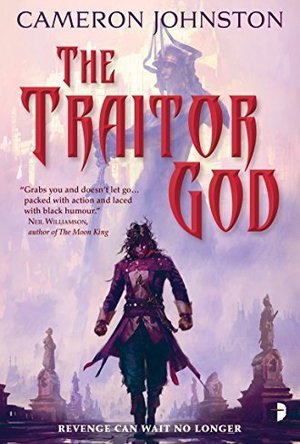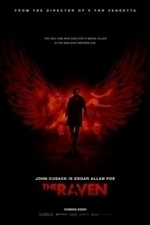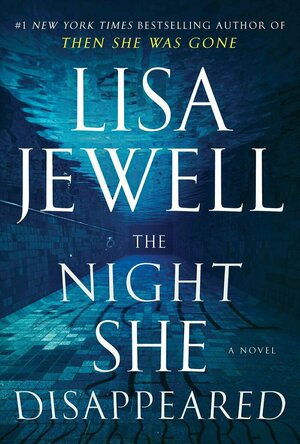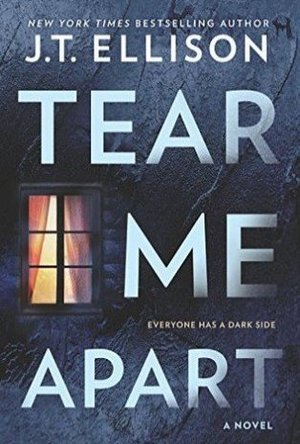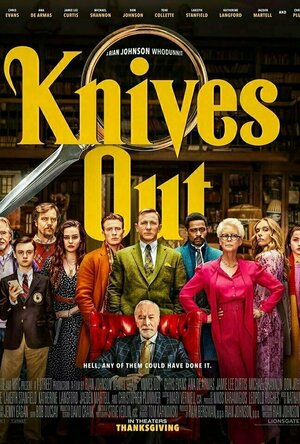Search
Search results
Ross (3284 KP) rated The Traitor God in Books
Jun 19, 2019
Fantastic gritty dark magical fantasy
The Traitor God is a book set in a world which has seen its fair share of turmoil. The once powerful Escharric empire crumbled centuries ago and their achievements and discoveries are still sought after. Magic plays a large part in this world, with some people born with a Gift (an affinity for a certain strain of magic), able to work their way up through the ranks (assuming they survive their tests) and hope for a place in leadership of Setharis, the most civilised of the remaining cities.
The magic used here feels similar to that in Brandon Sanderson's Mistborn series, with some people able to increase their strength or size, manipulate fire, water or air, or in Edrin Walker's case - control people's minds.
Walker starts off the story in a far flung city on the run from magical bounty hunter beasts and savage invaders. There is a "bad thing" in his past that he has only a vague memory of (like anyone who has woken up fully clothed with a dreadful hangover), and though he knows he cannot return to Setharis, he finds himself compelled to.
The book follows Walker's investigation to identify his friend's killer, and he gradually reveals a plot to destroy the city. As his power would normally see him imprisoned as a tyrant, he has to keep his abilities under wraps as much as possible. I have seen a few fantasy tales recently try to have more of a mystery angle, almost being a crime novel in a fantasy setting. This is the first time I have seen it delivered so well that it manages to cover both genres without compromise.
The story and writing here are truly fantastic. It has been quite some time since I have been able to rattle through a book with an amazing narrative tone, excellent gritty dialogue and a thrilling story. You are never more than a few pages away from a major revelation or exciting conflict.
I have the follow-up book to read and will delve into that with relish very soon.
The magic used here feels similar to that in Brandon Sanderson's Mistborn series, with some people able to increase their strength or size, manipulate fire, water or air, or in Edrin Walker's case - control people's minds.
Walker starts off the story in a far flung city on the run from magical bounty hunter beasts and savage invaders. There is a "bad thing" in his past that he has only a vague memory of (like anyone who has woken up fully clothed with a dreadful hangover), and though he knows he cannot return to Setharis, he finds himself compelled to.
The book follows Walker's investigation to identify his friend's killer, and he gradually reveals a plot to destroy the city. As his power would normally see him imprisoned as a tyrant, he has to keep his abilities under wraps as much as possible. I have seen a few fantasy tales recently try to have more of a mystery angle, almost being a crime novel in a fantasy setting. This is the first time I have seen it delivered so well that it manages to cover both genres without compromise.
The story and writing here are truly fantastic. It has been quite some time since I have been able to rattle through a book with an amazing narrative tone, excellent gritty dialogue and a thrilling story. You are never more than a few pages away from a major revelation or exciting conflict.
I have the follow-up book to read and will delve into that with relish very soon.
Deborah (162 KP) rated Murder at Mansfield Park (Charles Maddox #1) in Books
Dec 21, 2018
The Austen sequel or entertainment is an not uncommon beast these days, even if Pride & Prejudice is more usually the chosen book. As the title might give you a clue - this one relates more to Mansfield Park.
The major characters from the Austen novel are all there in name, but characters and relationships have been seriously altered. The first third of the book is mainly made up of recycled dialogue and narrative from Mansfield Park, but not necesarily in the same order. Mr Rushworth's character is changed to be more like Henry Crawford (and he is given the 'black and plain' description belonging to him in the novel) crossed with Robert Ferrars, so it seems odd when he is given dialogue beloning to the Mr Rushworth of the original novel, although not perhaps as strange when Mrs Norris is found spouting his lines.....
Fanny Price moves to become a rich heiress and the eldest of the female cousins; her character is more like the Maria of the book crossed with Lucy Steele and Caroline Bingley! Maria becomes more like the Julia of the book and Julia becomes more like the Fanny of the novel crossed with Marianne Dashwood - got that yet?! Henry Crawford here I don't really know - I'm not sure we got a proper description, so he does seem a bit of a cipher.
It's not a bad book, but with the murders I found it all rather unpleasant - I prefer such things to be more about the solving of the mystery than the incident itself, and here we have so few characters who could have committed the crime I didn't feel like I was waiting with baited breath for the conclusion (it's not Pug, in case you were worried.....). some characters were so underdeveloped it was rather obvious that they wouldn't have been involved. I do feel that having made so many changes, Lynn Shepherd would have been better off writing her own, original novel; one can't help but feel she has used Austen just to sell her book whereas her original dialogue does suggest that she could allow her writing to stand on its own merits.
The major characters from the Austen novel are all there in name, but characters and relationships have been seriously altered. The first third of the book is mainly made up of recycled dialogue and narrative from Mansfield Park, but not necesarily in the same order. Mr Rushworth's character is changed to be more like Henry Crawford (and he is given the 'black and plain' description belonging to him in the novel) crossed with Robert Ferrars, so it seems odd when he is given dialogue beloning to the Mr Rushworth of the original novel, although not perhaps as strange when Mrs Norris is found spouting his lines.....
Fanny Price moves to become a rich heiress and the eldest of the female cousins; her character is more like the Maria of the book crossed with Lucy Steele and Caroline Bingley! Maria becomes more like the Julia of the book and Julia becomes more like the Fanny of the novel crossed with Marianne Dashwood - got that yet?! Henry Crawford here I don't really know - I'm not sure we got a proper description, so he does seem a bit of a cipher.
It's not a bad book, but with the murders I found it all rather unpleasant - I prefer such things to be more about the solving of the mystery than the incident itself, and here we have so few characters who could have committed the crime I didn't feel like I was waiting with baited breath for the conclusion (it's not Pug, in case you were worried.....). some characters were so underdeveloped it was rather obvious that they wouldn't have been involved. I do feel that having made so many changes, Lynn Shepherd would have been better off writing her own, original novel; one can't help but feel she has used Austen just to sell her book whereas her original dialogue does suggest that she could allow her writing to stand on its own merits.
Gareth von Kallenbach (980 KP) rated The Raven (2012) in Movies
Aug 7, 2019
In this dark thriller, Edgar Allan Poe (John Cusack) is forced to assist a young detective to track down a mad serial killer when it becomes obvious that the inspiration for the murders are Poe’s own literary works.
This fictionalized account of the last days of Edgar Allan Poe’s life begins with the brutal murder of a mother and daughter. Inspector Emmett Fields (Luke Evans) finds something oddly familiar about the crime scene and his research leads him to a story written by Poe. A struggling writer on his way to becoming the local drunkard, Poe is brought in for questioning just as another murder is discovered, again one that mirrors one of the author’s grisly stories.
Because it’s his stories that the murderer’s recreating, Poe becomes Field’s reluctant assistant in hunting down the serial killer. But when it appears Poe’s fiancee (Alice Eve) may become the murderer’s next victim, the stakes become even greater, and now it’s the murderer who’s inspiring the writer and inventor of the detective story genre to do some of his best sleuthing work.
While the cat-and-mouse element of the movie kept me in suspense, the movie itself was void of the dark drama one would expect of a movie about Edgar Allen Poe, even a fictionalized account. Even with the detailed attention to the look of 19th century Baltimore, it wasn’t enough to help Cusack’s lightweight portrayal of Poe. Many times I wondered if Evans would have been better cast as the grim, moody writer.
What I actually appreciated most about the movie was the lyrical dialogue, the clever, poetic word usage of yesteryear. Although, there were some minor slips that made me wonder if the scriptwriter or actor forgot which century they were in. I did not have high expectations for this movie, so it truly did not disappoint. With a 111 minute runtime, “The Raven” has just enough mystery to keep one guessing, however it felt a bit rushed at the end. Up against more lively competition this weekend, this may be one to save for a DVD rental.
This fictionalized account of the last days of Edgar Allan Poe’s life begins with the brutal murder of a mother and daughter. Inspector Emmett Fields (Luke Evans) finds something oddly familiar about the crime scene and his research leads him to a story written by Poe. A struggling writer on his way to becoming the local drunkard, Poe is brought in for questioning just as another murder is discovered, again one that mirrors one of the author’s grisly stories.
Because it’s his stories that the murderer’s recreating, Poe becomes Field’s reluctant assistant in hunting down the serial killer. But when it appears Poe’s fiancee (Alice Eve) may become the murderer’s next victim, the stakes become even greater, and now it’s the murderer who’s inspiring the writer and inventor of the detective story genre to do some of his best sleuthing work.
While the cat-and-mouse element of the movie kept me in suspense, the movie itself was void of the dark drama one would expect of a movie about Edgar Allen Poe, even a fictionalized account. Even with the detailed attention to the look of 19th century Baltimore, it wasn’t enough to help Cusack’s lightweight portrayal of Poe. Many times I wondered if Evans would have been better cast as the grim, moody writer.
What I actually appreciated most about the movie was the lyrical dialogue, the clever, poetic word usage of yesteryear. Although, there were some minor slips that made me wonder if the scriptwriter or actor forgot which century they were in. I did not have high expectations for this movie, so it truly did not disappoint. With a 111 minute runtime, “The Raven” has just enough mystery to keep one guessing, however it felt a bit rushed at the end. Up against more lively competition this weekend, this may be one to save for a DVD rental.

Ghost Files: The Face of Guilt
Games and Stickers
App
FANTASTIC HIDDEN OBJECT PUZZLE ADVENTURE GAME FROM THE CREATORS OF ENIGMATIS AND GRIM LEGENDS! ...
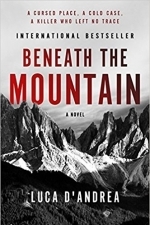
Beneath the Mountain: A Novel
Book
In Luca D’Andrea’s atmospheric and brilliant thriller, set in a small mountain community in the...
suspense thriller
Kristy H (1252 KP) rated The Night She Disappeared in Books
Sep 23, 2021
An intricate, twisty, page-turner of a thriller
Tallulah and her boyfriend, Zach, go out on a date, leaving their young son Noah behind with her mom, Kim. Kim waits up for Tallulah, but she never comes back. As Kim tries to find out what happened to her daughter, whom she knows would never leave Noah behind, she learns she was last seen at a party at house in the woods, called the Dark Place.
Two years later, Sophie moves to a boarding school where her boyfriend, Shaun, has just started to work as head teacher. As she explores the woods, she sees a note reading "Dig Here." A writer, Sophie starts investigating. Her sleuthing will take her into the world of the Dark Place and Tallulah's disappearance.
"With a racing heart and a sickening swirl in the pit of her stomach, she calls the police and she files a missing persons case."
This is an excellent thriller, hands-down. I read the second half in one sitting, because I was completely and totally sucked in. This is a mystery, but it has a ton of character to it--because the characters, ha, are real and vibrant people, with their own quirks, issues, and struggles that add an an extra element to the story. Tallulah, especially, is a nuanced character, a young mother struggling to find her place in the world, with her boyfriend, her friendships, and as a parent and student.
NIGHT is quite twisty--this read will keep you guessing. It's well-written, extremely dark (be prepared), and just well-done overall. It balances thrilling and characterization perfectly. I often hate when a "regular" character decides to be a sleuth, but Sophie, as a crime writer, was fine in the role. I loved Tallulah (extremely great, because she's missing, so Jewell gets us attached to a character who is gone and whose POV is told through the past). The book is complex, giving us insight into motherhood, relationships, friendship and more.
Overall, this was a winner for me. 4.5 stars.
I received a copy of this book from Atria Books and Netgalley in return for an unbiased review.
Two years later, Sophie moves to a boarding school where her boyfriend, Shaun, has just started to work as head teacher. As she explores the woods, she sees a note reading "Dig Here." A writer, Sophie starts investigating. Her sleuthing will take her into the world of the Dark Place and Tallulah's disappearance.
"With a racing heart and a sickening swirl in the pit of her stomach, she calls the police and she files a missing persons case."
This is an excellent thriller, hands-down. I read the second half in one sitting, because I was completely and totally sucked in. This is a mystery, but it has a ton of character to it--because the characters, ha, are real and vibrant people, with their own quirks, issues, and struggles that add an an extra element to the story. Tallulah, especially, is a nuanced character, a young mother struggling to find her place in the world, with her boyfriend, her friendships, and as a parent and student.
NIGHT is quite twisty--this read will keep you guessing. It's well-written, extremely dark (be prepared), and just well-done overall. It balances thrilling and characterization perfectly. I often hate when a "regular" character decides to be a sleuth, but Sophie, as a crime writer, was fine in the role. I loved Tallulah (extremely great, because she's missing, so Jewell gets us attached to a character who is gone and whose POV is told through the past). The book is complex, giving us insight into motherhood, relationships, friendship and more.
Overall, this was a winner for me. 4.5 stars.
I received a copy of this book from Atria Books and Netgalley in return for an unbiased review.
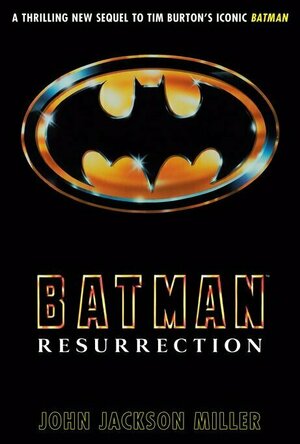
Batman: Resurrection
Book
After The Joker’s death, Batman and Gotham City face a mysterious new threat in this direct sequel...
Kristy H (1252 KP) rated Tear Me Apart in Books
Mar 11, 2019
Quick, engaging read
Mindy Wright--an up and coming competitive teenage skier-- breaks her leg in competition. During surgery, doctors discover that Mindy is sick: she has an aggressive form of leukemia and needs a stem cell transplant. But when her family is tested, it is discovered that Mindy's parents are not her biological parents. What does this mean? Was she switched at birth, or did something more dark and dramatic happen? At the core, Mindy needs to live. But beyond that, what are the ramifications for the Wright family? What secrets will be revealed and uncovered while trying to save their precious daughter?
This was a dramatic and interesting story that grabbed me from the beginning. The first portion is told from the perspective of three women: Mindy, age 17; her mother, Lauren; and Lauren's sister, Juliet, who actually works as a scientist in a DNA crime lab. This gives Juliet early and easy access to DNA samples relating to Mindy and the "case" as it progresses on. We also get excerpts of letters that appear to be from or relating to a psychiatric hospital in the early 1990s. All of this makes for an interesting and compelling format to our story, with a slow and steady reveal of strange information that you know does not add up: a twisted web of secrets and lies. We are immediately left wondering what happened with Mindy--how is she not Lauren's daughter? What is going on?
I do not want to go into too much detail and ruin much of the plot, but I found this one very intriguing, as I was wondering where the story would go. I might have been a little slow on the uptake as to who was Mindy's real mother, but I did find it exciting to put all the pieces together. I really liked the characters of Mindy and Juliet and a few others who were introduced later on (the story is told in various parts, so you get some different narrators, too).
In true Ellison fashion, there's some great drama and a few good "whoa" moments, as well. When I first started the book, I hadn't refreshed myself on the description, and I was a little worried that this would be more of a family drama than a mystery, but have no fear--while this family has more than their share of drama, there's a great mystery/thriller aspect as well. In fact, the novel can get downright creepy at times, with a villain who can give you the chills.
Overall, I thought this was another winner from Ms. Ellison. It's a quick, engaging read with interesting characters and a plot that encourages you to put the pieces together. She's quickly becoming a go-to author of mine. I'm actually chasing down her Taylor Jackson series on Paperbackswap, because I want to read more of her books! If you enjoy a dramatic, quick-moving thriller, I highly recommend this one!
I received a copy of this novel from the publisher and Netgalley in return for an unbiased review (thank you!).
This was a dramatic and interesting story that grabbed me from the beginning. The first portion is told from the perspective of three women: Mindy, age 17; her mother, Lauren; and Lauren's sister, Juliet, who actually works as a scientist in a DNA crime lab. This gives Juliet early and easy access to DNA samples relating to Mindy and the "case" as it progresses on. We also get excerpts of letters that appear to be from or relating to a psychiatric hospital in the early 1990s. All of this makes for an interesting and compelling format to our story, with a slow and steady reveal of strange information that you know does not add up: a twisted web of secrets and lies. We are immediately left wondering what happened with Mindy--how is she not Lauren's daughter? What is going on?
I do not want to go into too much detail and ruin much of the plot, but I found this one very intriguing, as I was wondering where the story would go. I might have been a little slow on the uptake as to who was Mindy's real mother, but I did find it exciting to put all the pieces together. I really liked the characters of Mindy and Juliet and a few others who were introduced later on (the story is told in various parts, so you get some different narrators, too).
In true Ellison fashion, there's some great drama and a few good "whoa" moments, as well. When I first started the book, I hadn't refreshed myself on the description, and I was a little worried that this would be more of a family drama than a mystery, but have no fear--while this family has more than their share of drama, there's a great mystery/thriller aspect as well. In fact, the novel can get downright creepy at times, with a villain who can give you the chills.
Overall, I thought this was another winner from Ms. Ellison. It's a quick, engaging read with interesting characters and a plot that encourages you to put the pieces together. She's quickly becoming a go-to author of mine. I'm actually chasing down her Taylor Jackson series on Paperbackswap, because I want to read more of her books! If you enjoy a dramatic, quick-moving thriller, I highly recommend this one!
I received a copy of this novel from the publisher and Netgalley in return for an unbiased review (thank you!).
Lucy Buglass (45 KP) rated Knives Out (2019) in Movies
Oct 24, 2019
Due to its ensemble cast, gorgeous aesthetics and whodunit storyline, it’s safe to say that I had high expectations for Knives Out.
I’m pleased to report that it surpassed each and every one of them.
Rian Johnson’s tale of mystery follows the death of renowned crime novelist Harlan Thrombey (Christopher Plummer), which took place after his 85th birthday. Presumed to be a murder, his eccentric and very large family are soon under investigation by Detective Benoit Blanc (Daniel Craig) and his team.
Straight away, Daniel Craig steals the show with his hilarious performance of Detective Blanc. From his deep Southern American drawl to his quirky mannerisms, this is so far removed from what you’d expect from a Craig performance. I’ve never seen him have this much fun in a role before.
He’s tasked with getting to the bottom of what happened, which involves a delightful series of interviews in which the family are sitting in front of several display knives, just one of the many eccentricities of the Thrombey manor house. In terms of set design it’s just glorious to look at, and even one of the characters compares it to a Cluedo board.
Even the characters themselves are quirky enough to be boxed up inside the classic board game, and could give the likes of Miss Scarlet and Colonel Mustard a run for their money.
Characters include Thrombey’s daughter and real estate mogul Linda Drysdale (Jamie Lee Curtis), her husband Richard (Don Johnson), and outcast trust fund son Ransom (Chris Evans), who form quite the dysfunctional family even when you remove them from the bigger picture.
Then there’s the rather insufferable, yet hugely entertaining, lifestyle guru Joni Thrombey (Toni Collette) and her daughter and social activist Meg (Katherine Langford). These two characters are parodies of popular blogging culture and ‘social justice warriors’, and they’re hilarious.
Each character has been wonderfully crafted by Rian Johnson, who both wrote and directed Knives Out. They’re essentially caricatures, but the result of this is a thoroughly entertaining cinema experience. What a brilliant use of such a talented cast.
The only seemingly normal person wrapped up in all this is caretaker Marta Cabrera (Ana de Armas), who acted as both a friend and nurse to Harlan prior to his death. Even against a backdrop of such bold characters, de Armas’ performance shines just as brightly.
Mysteries are hard to get right, and being able to predict the ending is a bragging right for many cinephiles. Well unfortunately, this script absolutely floored me with how fantastic it was, and I was unable to predict anything that went down. Johnson has serious talent when it comes to crafting a murder-mystery.
Don’t even get me started on how gorgeous the wardrobe in this film is either. If anyone knows where I can get Jamie Lee Curtis’ striking red suit, you need to tell me immediately.
Watching Knives Out was the most fun I’ve had in the cinema this year, perhaps ever. I was fully engrossed from start to finish, and walked out with the biggest smile on my face.
If you see one film this autumn, make it this one. You won’t regret it.
I’m pleased to report that it surpassed each and every one of them.
Rian Johnson’s tale of mystery follows the death of renowned crime novelist Harlan Thrombey (Christopher Plummer), which took place after his 85th birthday. Presumed to be a murder, his eccentric and very large family are soon under investigation by Detective Benoit Blanc (Daniel Craig) and his team.
Straight away, Daniel Craig steals the show with his hilarious performance of Detective Blanc. From his deep Southern American drawl to his quirky mannerisms, this is so far removed from what you’d expect from a Craig performance. I’ve never seen him have this much fun in a role before.
He’s tasked with getting to the bottom of what happened, which involves a delightful series of interviews in which the family are sitting in front of several display knives, just one of the many eccentricities of the Thrombey manor house. In terms of set design it’s just glorious to look at, and even one of the characters compares it to a Cluedo board.
Even the characters themselves are quirky enough to be boxed up inside the classic board game, and could give the likes of Miss Scarlet and Colonel Mustard a run for their money.
Characters include Thrombey’s daughter and real estate mogul Linda Drysdale (Jamie Lee Curtis), her husband Richard (Don Johnson), and outcast trust fund son Ransom (Chris Evans), who form quite the dysfunctional family even when you remove them from the bigger picture.
Then there’s the rather insufferable, yet hugely entertaining, lifestyle guru Joni Thrombey (Toni Collette) and her daughter and social activist Meg (Katherine Langford). These two characters are parodies of popular blogging culture and ‘social justice warriors’, and they’re hilarious.
Each character has been wonderfully crafted by Rian Johnson, who both wrote and directed Knives Out. They’re essentially caricatures, but the result of this is a thoroughly entertaining cinema experience. What a brilliant use of such a talented cast.
The only seemingly normal person wrapped up in all this is caretaker Marta Cabrera (Ana de Armas), who acted as both a friend and nurse to Harlan prior to his death. Even against a backdrop of such bold characters, de Armas’ performance shines just as brightly.
Mysteries are hard to get right, and being able to predict the ending is a bragging right for many cinephiles. Well unfortunately, this script absolutely floored me with how fantastic it was, and I was unable to predict anything that went down. Johnson has serious talent when it comes to crafting a murder-mystery.
Don’t even get me started on how gorgeous the wardrobe in this film is either. If anyone knows where I can get Jamie Lee Curtis’ striking red suit, you need to tell me immediately.
Watching Knives Out was the most fun I’ve had in the cinema this year, perhaps ever. I was fully engrossed from start to finish, and walked out with the biggest smile on my face.
If you see one film this autumn, make it this one. You won’t regret it.
Ivana A. | Diary of Difference (1171 KP) rated All These Beautiful Strangers in Books
Dec 21, 2018
Review can also be found on www.diaryofdifference.com
A beautiful story about families, love, betrayal, the difference between the rich and poor, and a girl that tries to discover what happened to her missing mother, while discovering herself.
Charlie Calloway has a life most people would kill for – a tight-knit family, a loyal set of friends, and top grades a privileged boarding school. But Charlie’s never been interested in what most people want. Like all Calloways, she’s been taught that she’s different, special – better. So when her school’s super-exclusive secret society extends a mysterious invitation, Charlie’s determination to get in is matched only by her conviction that she belongs there.
But their secrets go deeper than she knows.
Charlie finds herself thrust into the centre of a decades-old mystery – one that implicates her family in not one terrible crime, but two. Uncovering their past may destroy everything she knows – or give her the answer she’s always craved: Who or what was behind her mother’s disappearance ten years ago?
I haven’t heard about this book until I received it as a birthday gift from my sister. The cover is just – gorgeous! You can feel the raindrops on the cover, and the sides are painted black, and you can read out ”I KNOW”. They have been thinking of all the little details.
The story is a bit slow at the beginning. It took me a while to get into it, as they delay the plot for a while, but once you get past that little hill of boredom, it gets better and better. I could imagine myself climbing a mountain with my bike, struggling while climbing, just so I can enjoy the great fast downhill and wind in my face.
The story is told by many people’s perspective, and it changes after each chapter. The amazing thing was, the stories go back in the past as well, but the story keeps flowing in one direction, event by event, which I really enjoyed. If this was poorly made, the book would’ve been so confusing, but fortunately, it wasn’t.
Even though I didn’t expect, this turned out to be a great mystery-solving novel, with wonderful and unexpected plot-twists, and a cliffhanger until the end. Is the mother dead or alive?
Many of the topics covered are very relatable. The difference between children raised in rich families versus the children raised in not-s-rich families. Their thoughts and mindsets, their beliefs, and the people they hang out with. And when a girl like Charlie, who has a father from a rich family and a mother from a poor family, is on the cross-road, it is amazing to see this character develop and make choices for herself, that reflect on both her backgrounds.
A lovely read, fast-paced novel, with a beautiful cover and even more beautiful reading material, this is one of the stories that I would recommend for you to read on a rainy day, covered in a blanket, with a hot chocolate – despite the summer theme on the cover, this was a winter book for me.
A beautiful story about families, love, betrayal, the difference between the rich and poor, and a girl that tries to discover what happened to her missing mother, while discovering herself.
Charlie Calloway has a life most people would kill for – a tight-knit family, a loyal set of friends, and top grades a privileged boarding school. But Charlie’s never been interested in what most people want. Like all Calloways, she’s been taught that she’s different, special – better. So when her school’s super-exclusive secret society extends a mysterious invitation, Charlie’s determination to get in is matched only by her conviction that she belongs there.
But their secrets go deeper than she knows.
Charlie finds herself thrust into the centre of a decades-old mystery – one that implicates her family in not one terrible crime, but two. Uncovering their past may destroy everything she knows – or give her the answer she’s always craved: Who or what was behind her mother’s disappearance ten years ago?
I haven’t heard about this book until I received it as a birthday gift from my sister. The cover is just – gorgeous! You can feel the raindrops on the cover, and the sides are painted black, and you can read out ”I KNOW”. They have been thinking of all the little details.
The story is a bit slow at the beginning. It took me a while to get into it, as they delay the plot for a while, but once you get past that little hill of boredom, it gets better and better. I could imagine myself climbing a mountain with my bike, struggling while climbing, just so I can enjoy the great fast downhill and wind in my face.
The story is told by many people’s perspective, and it changes after each chapter. The amazing thing was, the stories go back in the past as well, but the story keeps flowing in one direction, event by event, which I really enjoyed. If this was poorly made, the book would’ve been so confusing, but fortunately, it wasn’t.
Even though I didn’t expect, this turned out to be a great mystery-solving novel, with wonderful and unexpected plot-twists, and a cliffhanger until the end. Is the mother dead or alive?
Many of the topics covered are very relatable. The difference between children raised in rich families versus the children raised in not-s-rich families. Their thoughts and mindsets, their beliefs, and the people they hang out with. And when a girl like Charlie, who has a father from a rich family and a mother from a poor family, is on the cross-road, it is amazing to see this character develop and make choices for herself, that reflect on both her backgrounds.
A lovely read, fast-paced novel, with a beautiful cover and even more beautiful reading material, this is one of the stories that I would recommend for you to read on a rainy day, covered in a blanket, with a hot chocolate – despite the summer theme on the cover, this was a winter book for me.
